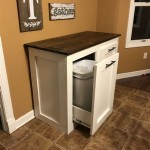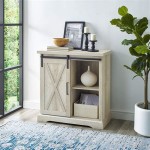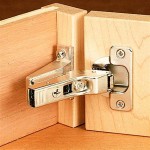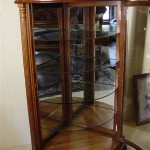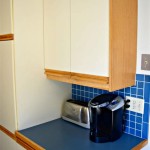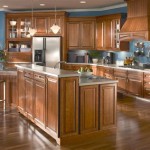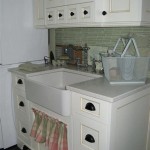How to Strip Cabinets: Restoring Natural Wood Beauty
Stripping cabinets is a rewarding process that reveals the natural beauty of the wood hidden beneath layers of old paint or varnish. This article provides a comprehensive guide to stripping wood cabinets, covering necessary materials, safety precautions, and step-by-step instructions.
Gathering Necessary Materials
Before beginning the stripping process, gather all the necessary materials. This preparation streamlines the workflow and ensures a smooth, uninterrupted process. The essential items include:
- Chemical stripper
- Paint scraper (plastic or metal)
- Steel wool
- Drop cloths
- Safety glasses
- Chemical-resistant gloves
- Ventilator mask
- Mineral spirits
- Clean rags
- Sandpaper (various grits)
- Putty knife
- Wood filler (optional)
Preparing the Work Area
Creating a well-ventilated and protected work area is crucial for safety and efficiency. Proper preparation prevents accidental damage and ensures a clean working environment.
- Work outdoors or in a well-ventilated area.
- Cover the work surface with drop cloths to protect against spills and debris.
- Remove cabinet hardware, such as knobs, hinges, and pulls.
- Clean the cabinet surfaces to remove any dust or grime.
Applying the Chemical Stripper
Applying the chemical stripper correctly is essential for effective paint or varnish removal. Following these steps ensures optimal results and minimizes potential damage to the wood.
- Follow the manufacturer's instructions carefully.
- Apply a thick, even layer of stripper using a brush or roller.
- Allow the stripper to dwell for the recommended time, typically 15-30 minutes. Do not let it dry completely.
Removing the Stripped Finish
Once the stripper has softened the finish, carefully remove it using appropriate tools. This step requires patience and attention to detail to avoid damaging the underlying wood.
- Use a plastic or metal paint scraper to gently lift and remove the softened finish.
- For intricate details or tight corners, use steel wool or a small brush.
- Avoid excessive pressure or scraping, which can scratch the wood.
Neutralizing the Stripper
Neutralizing the stripper is crucial to stop its action and prevent damage to the wood. Proper neutralization prepares the surface for subsequent finishing steps.
- Consult the manufacturer's instructions for specific neutralization procedures.
- Typically, mineral spirits are used to neutralize the stripper.
- Wipe down the surfaces thoroughly with clean rags soaked in mineral spirits.
Cleaning and Preparing the Wood
After neutralizing the stripper, thoroughly clean and prepare the wood. This step ensures a smooth, even surface for finishing.
- Clean the wood with a mixture of warm water and mild dish soap.
- Rinse thoroughly with clean water and allow the wood to dry completely.
- Inspect the wood for any remaining finish or imperfections.
Sanding and Repairing the Wood
Sanding and repairing the wood prepares it for finishing and addresses any imperfections. This stage is crucial for achieving a professional-looking result.
- Sand the wood using progressively finer grits of sandpaper, starting with a coarse grit (e.g., 100-grit) and working up to a fine grit (e.g., 220-grit).
- Fill any dents or imperfections with wood filler, allowing it to dry completely before sanding smooth.
- Remove all sanding dust with a tack cloth or vacuum.
Finishing the Cabinets
The final step is to apply the desired finish to the cabinets. This protects the wood and enhances its natural beauty. Selecting the proper finish is important for achieving the desired aesthetic and durability.
- Choose a suitable finish, such as stain, paint, or varnish.
- Follow the manufacturer's instructions for application.
- Apply multiple thin coats, allowing each coat to dry completely before applying the next.
Stripping cabinets successfully requires meticulous attention to detail and patience. By following these steps and adhering to safety precautions, one can achieve beautifully restored cabinets that showcase the natural wood grain.

Refinishing Kitchen Cabinets Modern Refacing Made Easy Wisewood

How To Make Rustic Kitchen Cabinets By Refinishing Them The Best Stain Color Amanda Katherine

How To Refinish Wood Cabinets The Easy Way Love Remodeled

How To Strip Furniture Natural Wood Look Diy With Amy

How To Refinish Wood Cabinets The Easy Way Love Remodeled
:strip_icc()/103081211-6eeaaa24eefe46f9987249bf6712aa00.jpg?strip=all)
Our Step By Guide To Beautiful Stained Wood Cabinets

How To Re Worn Kitchen Cabinets Without A Complete Overhaul The Seattle Times

How To Re Worn Kitchen Cabinets Without A Complete Overhaul The Seattle Times

How To Lighten Stained Wood 7 Options That Work Grace In My Space

Refinish Kitchen Cabinets Without Stripping
Related Posts

